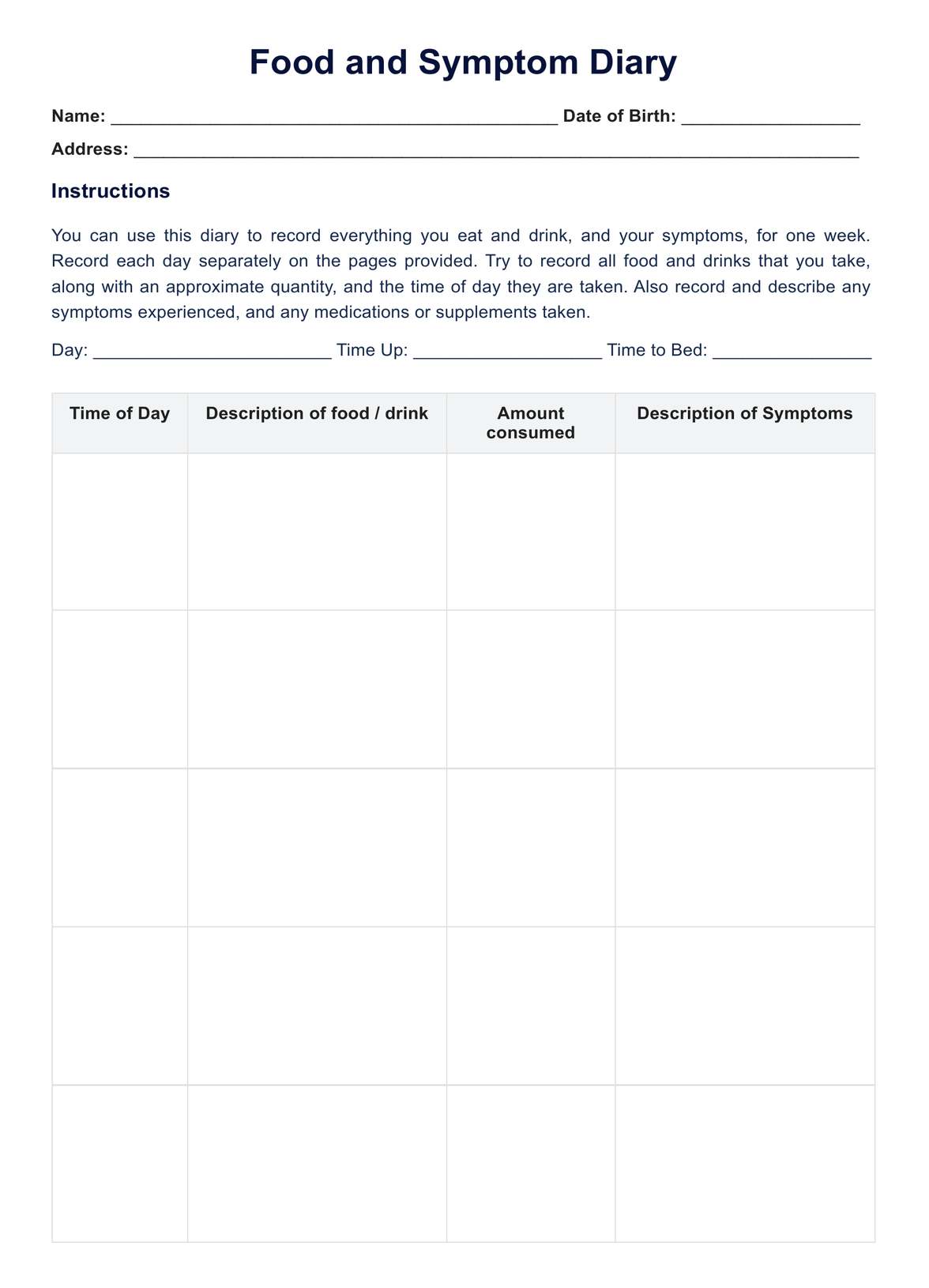Most healthcare providers recommend keeping a food and symptom diary for at least 3 to 5 days, including at least one weekend day. However, some may recommend keeping a food diary for up to two weeks or longer to get a more accurate picture of dietary patterns and symptoms.

Food and Symptom Diary PDF
Track your food intake and symptoms on a symptom-free day with our convenient Food and Symptom Diary PDF report. Monitor your health quickly and effectively.
Food and Symptom Diary PDF Template
Commonly asked questions
A food and symptom diary should include all food and drinks consumed, estimated quantities, and any gastrointestinal symptoms experienced. It is also essential to include brand names, cooking methods, condiments, dressings, dips, and spreads.
When recording symptoms in a food and symptom diary, it is essential to describe them accurately and score their severity using a symptom score, such as mild, moderate, severe, or severe. It is also helpful to record the time of day that symptoms occur and the time of day that food and drinks are consumed.
EHR and practice management software
Get started for free
*No credit card required
Free
$0/usd
Unlimited clients
Telehealth
1GB of storage
Client portal text
Automated billing and online payments











